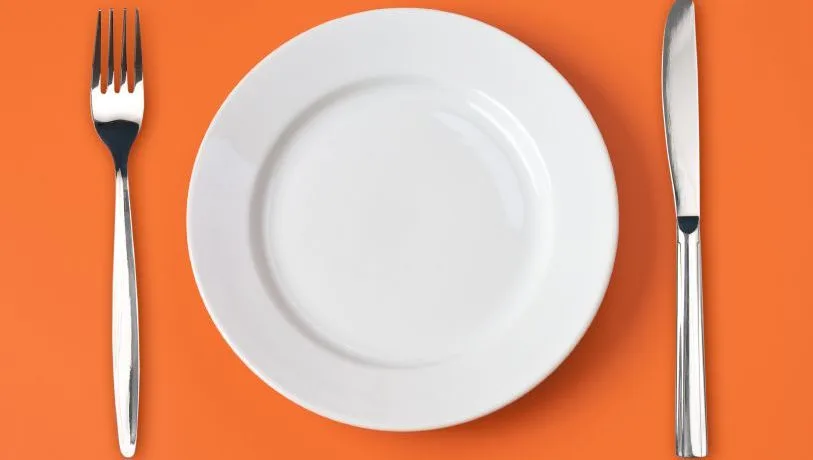Intermittent fasting (IF) has become an incredibly popular approach to weight loss in recent years. This powerful yet simple strategy involves cycling between periods of eating and fasting to reap impressive health and weight loss benefits. If you’re looking for a sustainable, effective way to lose weight and keep it off, intermittent fasting may be the solution you’ve been searching for.
In this comprehensive guide, we’ll explore everything you need to know to get started and succeed with intermittent fasting. You’ll learn the science behind why it works, the different methods you can try, and tips to make fasting easier. We’ll also discuss how to optimize nutrition during your eating windows and fasting periods. Whether you’re new to IF or looking to refresh your knowledge, this guide will provide the tools and motivation you need to make intermittent fasting a lifestyle. Let’s get started!

What is Intermittent Fasting?
Intermittent fasting simply means alternating between periods of eating and fasting. It’s about when you eat, not what you eat. During the fasting windows, no calories are consumed, but you are allowed to drink water, coffee, tea and other non-caloric beverages. When it’s time for your eating window, you eat normally without restrictions on types or amounts of food (within reason).
The most popular IF approach is the 16/8 method, which involves fasting for 16 hours per day and restricting food intake to an 8-hour window. For example, you might skip breakfast and eat between 12-8pm daily. Other common IF patterns include the 5:2 diet, which restricts calories to 500-600 for 2 non-consecutive days per week, and alternate day fasting.
Why Intermittent Fasting is So Popular
Intermittent fasting has exploded in popularity in recent years thanks to its remarkable weight loss and health benefits. IF makes it easier to restrict calories and lose weight because it simplifies your eating schedule and reduces decision fatigue. You don’t have to count calories or ban foods – just focus your meals into a consistent daily window.
IF may also mimic some of the benefits of prolonged fasting, like supporting cellular repair, reducing inflammation, and improving metabolic health. Studies show IF can be an effective strategy for weight loss, reducing belly fat, preserving muscle mass, and lowering the risk of type 2 diabetes and other chronic diseases. No wonder so many people are giving it a try!

Purpose of This Ultimate Guide
With this comprehensive intermittent fasting guide, you’ll have all the knowledge and tools needed to begin a successful IF protocol. We’ll walk through the science behind why IF works, the pros and cons of different methods, nutrition and meal planning strategies, and tips to make fasting easier. Whether you’re a total beginner or experienced faster, you’ll find motivational techniques and practical advice to empower your weight loss journey. Let’s get started!
Types of Intermittent Fasting
There are several different IF eating schedules you can follow. The most popular types of intermittent fasting include:
16/8 Method
This involves fasting for 16 hours per day and restricting food intake to an 8-hour window. For example, you might skip breakfast and only eat between 12-8pm daily. This is the most popular and sustainable IF protocol.
5:2 Diet
Also called the Fast Diet, this approach involves fully fasting or restricting calories to 500-600 for 2 non-consecutive days per week and eating normally the other 5 days. For example, you might fast on Mondays and Thursdays.
Eat-Stop-Eat
This type of IF involves fasting for 24 hours once or twice per week, such as dinner to dinner or breakfast to breakfast. On other days, you eat normally without restrictions.
Warrior Diet
This regimen involves eating small amounts of raw veggies and fruits during the day and consuming one large meal at night. It’s a type of 23/1 intermittent fasting plan.
The best intermittent fasting method is the one you can stick to consistently and feel best on. Consider starting with the popular 16/8 protocol and adjusting your fasting and eating window as needed to find your optimal schedule. The longer the fasting period, the more accelerated the weight loss effects may be.

Getting Started with Intermittent Fasting
Here are some tips for ramping up to your first intermittent fasting protocol:
- Start by gradually increasing your overnight fast by delaying your breakfast by an hour or two each day until you reach your desired fasting window, such as 16 hours. This eases the transition.
- Drink plenty of water, unsweetened tea, coffee, and other non-caloric beverages during fasting periods to stay hydrated and reduce hunger.
- Determine your eating window schedule in advance and stick to it consistently to establish a habit. Consistency is key.
- Plan your meals ahead of time. Prep healthy snacks and meals to eat during your window.
- Listen to your body. Modify your fasting times if you feel unwell or overly fatigued.
- Combine fasting with exercise for amplified results. Working out during the fasted state can further boost weight loss.
Be patient with yourself as you adjust to intermittent fasting. Any discomfort typically subsides within 1-2 weeks. You’ll soon be an IF pro!
Benefits of Intermittent Fasting for Weight Loss
Intermittent fasting offers many impressive benefits that make it easier to lose weight and improve health, including:
- Simplifies calorie restriction – By limiting eating to specific windows, you effortlessly reduce calories without counting. Abstaining from late night snacking further supports deficit.
- Controls appetite – Fasting periods help control hunger-inducing hormones like ghrelin. You’ll be surprised how fasting makes you less obsessed with food.
- Triggers fat burning – Fasting shifts the body into fat burning mode. Longer fasting periods further accelerate the use of fat stores for energy.
- Preserves muscle – IF triggers an anabolic state that helps preserve muscle as you lose fat so you look toned rather than skinny.
- Supports cellular repair – Fasting activates autophagy, your body’s process of eliminating damaged cells and regenerating newer, healthier cells.
- Improves metabolism – Fasting gives your digestion a rest and allows insulin to normalize, which supports a healthy metabolism.
For safe, sustainable weight loss paired with impressive health benefits, intermittent fasting is an amazing tool.
What’s Happening in Your Body During a Fast
Intermittent fasting triggers a complex series of metabolic, hormonal and cellular changes that lead to fat burn and weight loss. Here’s what’s happening inside your body when fasting:
Metabolic Shifts
12-36 hours into a fast, stored glucose (glycogen) is used up. The body shifts to burning fat for energy instead of carbs through a process called ketogenesis. The longer you fast, the more your metabolism relies on fat stores for energy.
Lower Insulin
Fasting lowers insulin levels, allowing fat cells to release stored fatty acids to be burned for energy. Lower insulin also improves insulin sensitivity to keep blood sugar stable.
Growth Hormones
As fasting progresses, levels of human growth hormone skyrocket. This facilitates fat burning while preserving lean muscle mass.
Cellular Repair
Fasting triggers a process called autophagy, where cells recycle damaged proteins into energy and remove dysfunctional cells. This cellular cleanse supports anti-aging and health.
Appetite Regulation
Fasting lowers levels of the hunger hormone ghrelin while raising levels of appetite-regulating hormones like peptide YY and leptin to reduce hunger.
In essence, intermittent fasting rewires your metabolism to transition from burning sugar to burning fat as your primary fuel source. Understanding these mechanisms helps illuminate why IF is such a powerful weight loss approach.

Hormonal Changes That Lead to Fat Burn
Intermittent fasting causes dramatic changes in hunger and fat regulating hormones that make it easier to lose weight, including:
Ghrelin – Also called the “hunger hormone”, ghrelin increases appetite and triggers hunger. Fasting causes ghrelin to plunge, helping control hunger.
Insulin – This hormone regulates blood sugar and signals your body to store fat. When insulin is chronically elevated due to overeating, you gain weight. Fasting decreases insulin so your body can burn its fat stores for energy.
Adiponectin – As levels of this hormone rise during fasting, it enhances fat breakdown and supports metabolism. Adiponectin is anti-inflammatory and improves insulin sensitivity as well.
Norepinephrine – By raising norepinephrine, fasting ramps up fat release and breakdown from your fat tissue. This facilitates weight loss.
Understanding these hormonal shifts makes it easy to see why intermittent fasting and weight loss go hand-in-hand. By optimizing key appetite and fat burning hormones, IF makes losing weight feel effortless.
Metabolic Magic: How Fasting Unlocks Fat Burning
Here’s an overview of the key metabolic changes that make intermittent fasting so effective for fat loss and weight control:
- Improved insulin sensitivity – Fasting reduces insulin resistance by improving the sensitivity of your cells to this hormone. This makes it easier for the body to use glucose and burn fat.
- Transition to fat burning mode – Lowered insulin triggers the release of stored fatty acids from fat cells to be used as energy. The longer you fast, the more your metabolism relies on fat stores for fuel.
- Increased metabolic flexibility – IF optimizes metabolic flexibility, or the ability to switch back and forth between burning carbs and fats for fuel. This is the hallmark of a functioning metabolism.
- Maintenance of muscle mass – Fasting upregulates growth hormone which preserves lean muscle mass as you lose weight.
- Cellular repair processes – Fasting activates autophagy and ketogenesis, processes that remove damaged cells and support anti-aging.
The complex metabolic changes induced by fasting essentially unlock your body’s ability to burn your stored fat for energy. This is what makes it such a sustainable approach for weight loss and maintenance.
The Role of Autophagy in Fasting and Weight Loss
One of the most fascinating effects of fasting is the activation of a process called autophagy. When autophagy ramps up, your cells swiftly clear dysfunctional proteins and remove damaged cells. This acts as a powerful cellular cleanse and recycling program that underlies many of fasting’s health benefits.
By stimulating autophagy, intermittent fasting enables your cells to reset in a sense, removing waste material and defective parts that can impair cellular metabolism and function. This self-cleaning process generates fresh cellular energy from broken down debris as well.
Enhanced autophagy provides anti-aging and disease-fighting benefits. The process can:
- Prevent damaged proteins and cells from accumulating
- Clean up debris like reactive oxygen species that cause oxidative stress
- Recycle old cell components to produce energy
- Rejuvenate cells by producing new healthy organelles
- Trigger production of beige fat cells that burn energy
- Improve mitochondrial health and grow new mitochondria
By removing cellular “garbage” and optimizing metabolism, autophagy provides the ultimate detox for your body’s cells. This helps the body run more efficiently with enhanced vitality. Plus, autophagy activation appears essential for the clinical benefits and anti-aging effects of fasting.
Optimizing Your Diet for Intermittent Fasting Success
To ensure you get awesome results with intermittent fasting, nutrition still matters. Follow these diet tips to accelerate fat burning during your fasts and nourish your body during feeding windows:
During Fasting Periods
- Stick to non-caloric fluids like water, unsweetened tea, black coffee and sparkling water to stay hydrated.
- Take electrolytes like magnesium, potassium and sodium to prevent low levels from extended fasting.
- You can add cream, bone broth, lemon or apple cider vinegar to your beverages if you need more sustenance.
During Eating Windows
- Focus on getting plenty of protein, fiber and anti-inflammatory fats at meals. These nutrients keep you full and satisfied.
- Eat plenty of non-starchy veggies like leafy greens, broccoli and asparagus which provide nutrients without spiking insulin.
- Choose lean proteins like fatty fish, chicken, turkey, eggs and tofu. Grass-fed red meat is fine in moderation.
- Eat healthy fats like olive oil, avocado, nuts, seeds and coconut.
- Avoid added sugar and refined grains which can spike blood sugar and trigger hunger.
Remember, intermittent fasting doesn’t require you to restrict what you eat – just when you eat. Focus on nourishing, anti-inflammatory whole foods to get the best results.

Avoiding Common Diet Pitfalls with Intermittent Fasting
To feel your best while fasting, here are some important nutrition mistakes to avoid:
Not eating enough protein – Getting ample protein is crucial to prevent muscle loss and keep you full. Shoot for 0.7-1 gram of protein per pound of body weight daily.
Overdoing unhealthy fats – While healthy fats are key, too much greasy processed food can cause GI issues. Get your fats from avocado, nuts, olive oil, etc.
Spiking blood sugar – Sugary junk foods spike insulin and hunger. Stick to complex carbs with fiber like sweet potatoes, quinoa, oats, etc.
Not replenishing electrolytes – Headaches, fatigue and muscle cramps can occur if sodium, potassium, etc. drop too low from fasting. Drink mineral water or take supplements.
Calorie overcompensation – Don’t justify binge eating during feeding windows. That will minimize your results.
With a little nutrition knowledge, you can troubleshoot issues that may arise with intermittent fasting to keep you on track. Focus on nourishment and wellness during your eating windows.
Meal Planning Tips for Intermittent Fasting
Preparation is key to stay consistent with intermittent fasting. Follow these meal planning tips:
- Plan your meals – Make a weekly meal plan to establish healthy habits. Prepare nourishing meals and snacks to eat when it’s time to break your fast.
- Restock healthy staples – Your pantry should include items like nuts, nut butters, avocados, hummus, olives, coconut, oats, quinoa, chicken breasts, fatty fish, eggs, Greek yogurt, protein powder, etc.
- Batch cook – Designate time to batch cook servings of lean proteins or healthy sides for the week. This makes assembling meals simple.
- Stay hydrated – Drink plenty of water and unsweetened beverages between and during meals. Proper hydration suppresses appetite.
- Time your nutrients – Focus your carbs early in the eating window when your body can use them for energy. Save fats and protein for later when insulin is lower.
With a little planning, you can nourish your body properly while optimizing your intermittent fasting results. Healthy eating complements fasting.
Health Considerations Before Starting Intermittent Fasting
Intermittent fasting is generally safe for healthy adults. However, certain groups should take precautions or avoid it altogether:
Diabetes – Seek medical guidance before fasting to ensure proper blood sugar management, especially if on medication. Start conservatively.
Low blood pressure – Monitor your levels and break fasts if you feel dizzy. Ensure sufficient sodium and hydration.
Gastrointestinal issues – People prone to ulcers, reflux or dysmotility may struggle with fasting. Go slowly.
Eating disorders – Those with a history of disordered eating should be mindful before fasting to avoid triggering unhealthy behaviors.
Pregnancy/nursing – Fasting is not recommended for pregnant or breastfeeding women as calorie restriction can be harmful.
Children/teens – Growing children should not fast without medical supervision given high calorie needs.
While intermittent fasting can be beneficial for many, check with your doctor first if you have any medical conditions or concerns. Certain circumstances may warrant a more gradual approach.
Safety Tips for Intermittent Fasting
Here are some tips for safe, sustainable intermittent fasting:
- Break your fast if you feel unwell, weak or extremely hungry. Listen to your body’s cues.
- Stay hydrated by drinking water, herbal tea, broth and mineral water during fasting periods. Dehydration can cause headaches.
- Get sufficient sleep, which helps control hunger hormones and support health.
- Supplement key nutrients like sodium, potassium, magnesium, calcium and omega-3s to prevent deficiencies with prolonged fasting.
- Move your body with light walking, stretching or gentle yoga during fasts. Just don’t overexert yourself when calorie-restricted.
- Speak with your doctor before fasting if you take medications, especially diabetes or blood pressure meds that may need adjusted.
The keys are paying attention to your body, staying nourished, and making sure fasting fits into your lifestyle in a sustainable way. Patience and consistency are everything.
Tips for Sticking with Intermittent Fasting
The primary challenge with intermittent fasting is staying consistent long-term. Here are some tips to make fasting easier:
Remain Consistent
- Stick to the same eating schedule daily to establish a habit. On harder days, remember why you started. Consistency is key to lasting results.
Stay Hydrated
- Sip on water constantly during fasting periods to control hunger and prevent dehydration headaches. You can also drink unsweetened tea, coffee and mineral water.
Manage Hunger
- Identify when you typically get hungry and have a plan to distract yourself, like going for a walk or engaging in a hobby during that time. Hunger comes in waves; simply wait it out.
Fight Cravings
- If intense sugar or junk food cravings arise, drink a glass of water and wait 10-15 minutes. Often the urge will pass. Stay busy and productive during your fast.
Incorporate Exercise
- Working out during your fasting window amplifies fat burning, just listen to your body. Stay hydrated and avoid overexertion if feeling low energy.
With commitment and smart strategies, your body adjusts to intermittent fasting within 1-2 weeks. Etch your eating schedule into your
Thank you for reading this post, don't forget to subscribe to our free newsletter
!